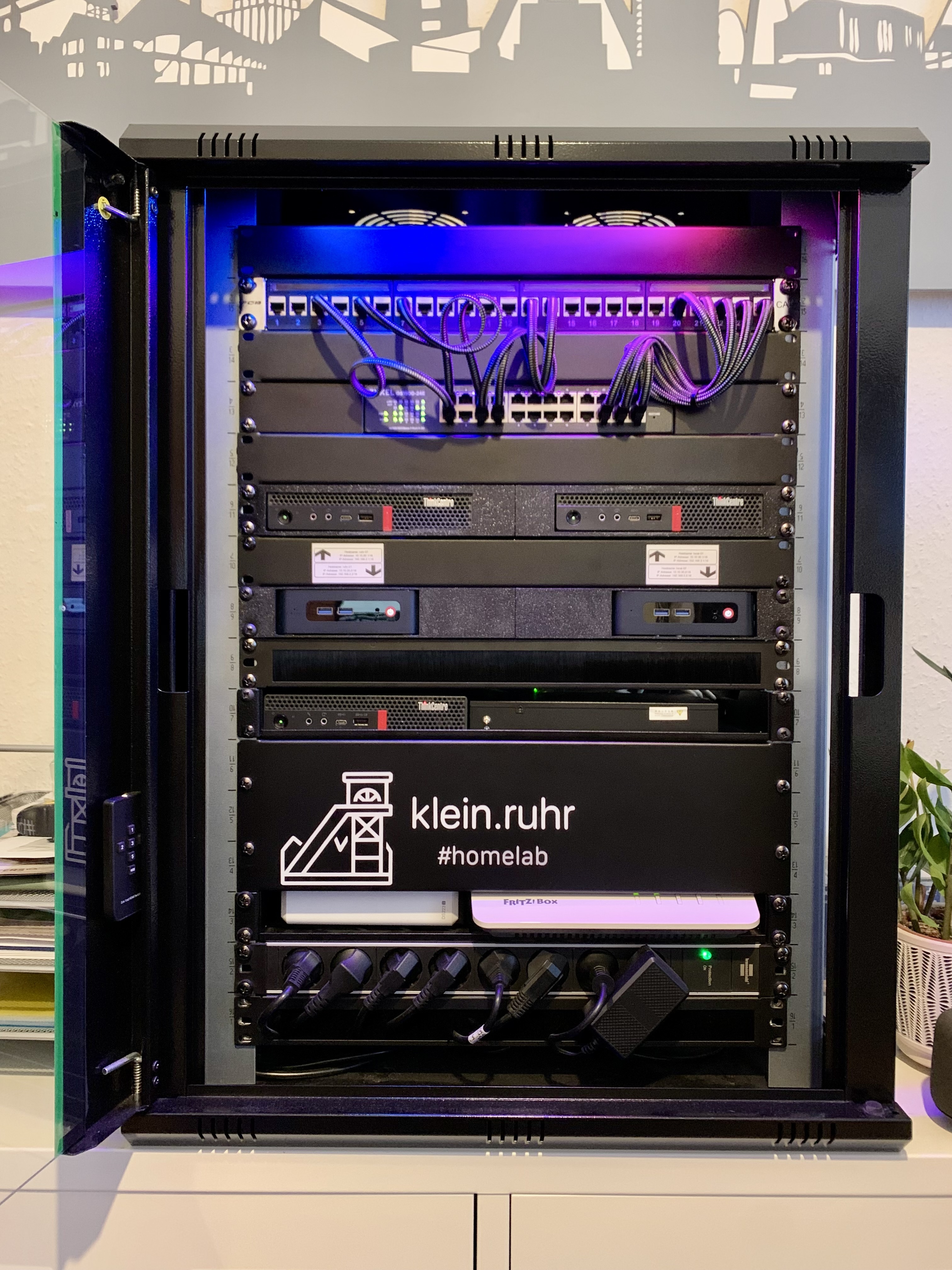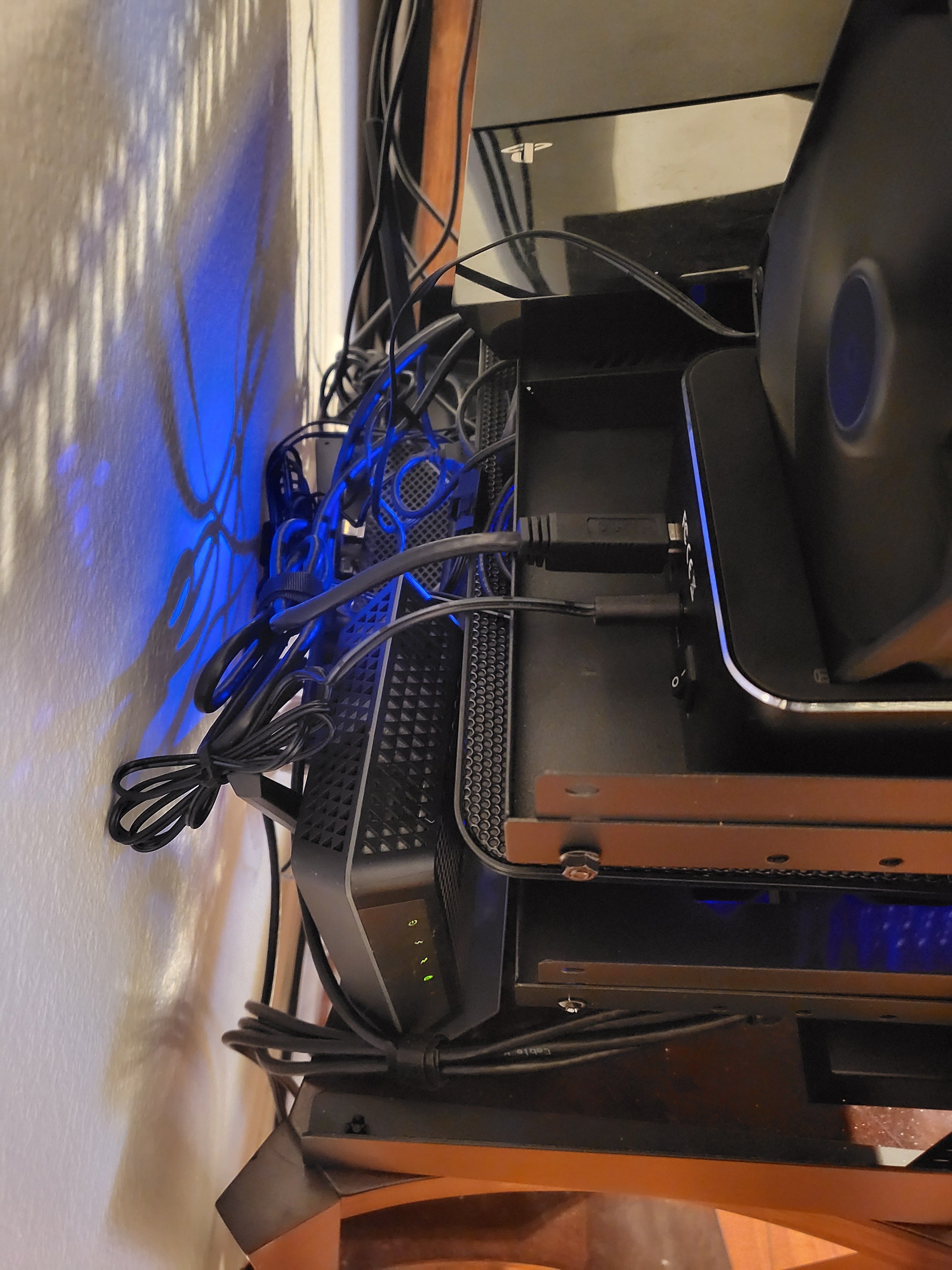
Only use jellyfin. Have a list of things want to update… but it works for now.
Yes that is a laptop usb cooler used as supplemental placebo cooling. Also a pc fan I have propped up against the hard drive feeding into the pi.
Can’t recall last time used the ps4 or switch. But they’re there
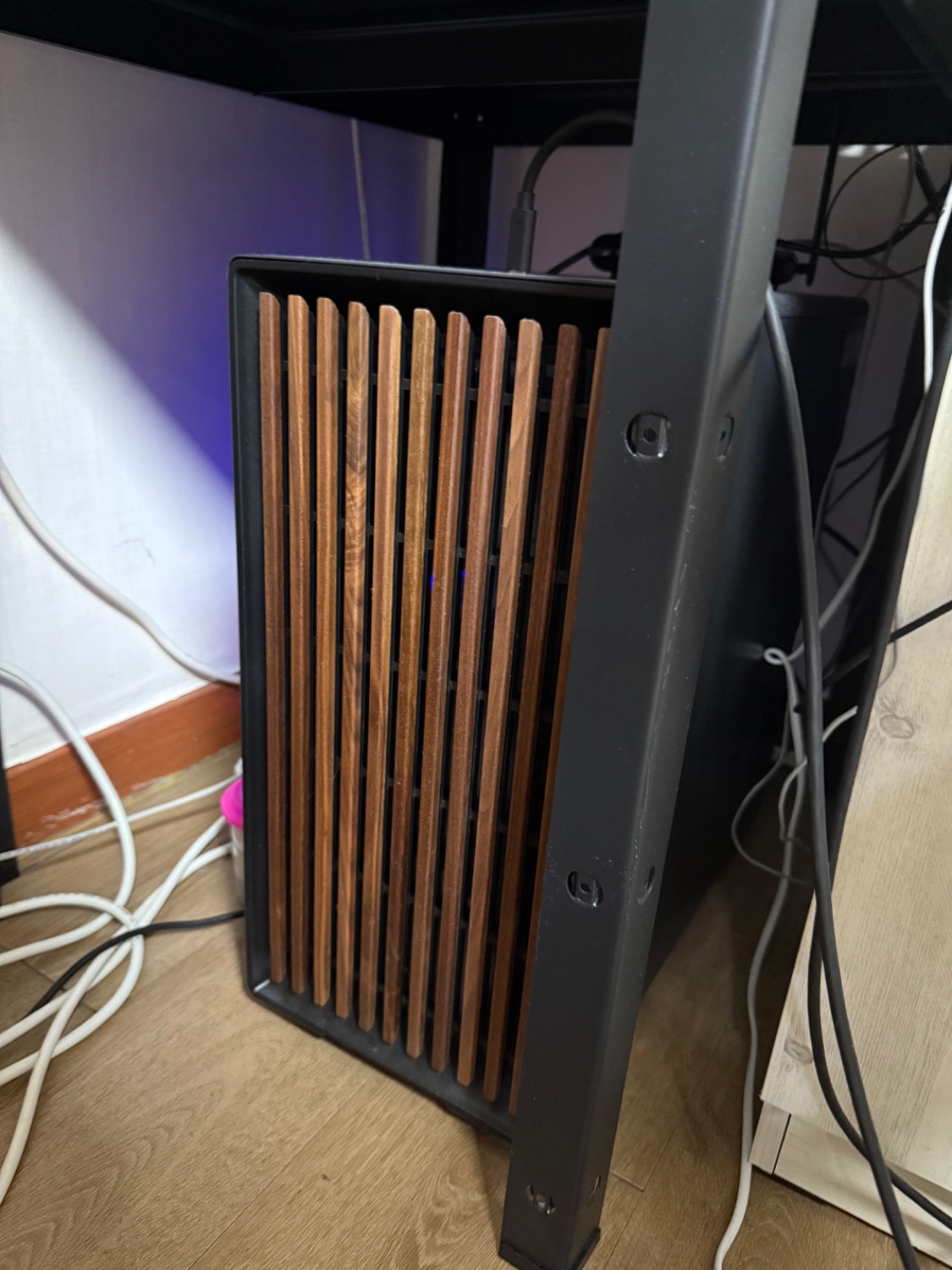 The main server. Specs:
The main server. Specs:- Ryzen Threadripper 7960X
- 256GiB (4x64GiB quad-channel) of DDR5 REG/ECC running at 4800MT/s
- 256GB SATA for Proxmox boot disk, 2TB WD BLACK SN850X NVMe for VM data
- NVIDIA RTX 4080 Super for workstation use, AMD Radeon Pro WX 3100 for Proxmox console
- Proxmox VE
- RHEL 9 for server (14c, 160GiB RAM, 800GB SSD), Arch for workstation (10c, 80GiB RAM, 1.6TB SSD)
Server runs:
- Mastodon
- Minio for S3 bucket
- Lemmy
- Four Minecraft server, two modded and two vanilla
- Jellyfin
- Roon
- Komga
- Nextcloud AIO
- Pi-Hole
- Bluesky PDS
Bonus: I use Oracle Cloud server for:
- Mirror
- Ghost blog
- Synapse
- Vaultwarden
- Wikiless
Below, a picture of my small rack, which is located in my home office. Due to the selected components, it is virtually silent and still bobs along at only 26 - 28° C.
The hardware is divided into two Proxmox clusters. The first consists of the three Lenovo M920qs shown here and is home to my publicly accessible services and VMs, the second consists of the two Beelink EQ12s and is responsible for the internal services or those accessible via VPN.
Not the greatest or best Homelab, but for me, it fulfils all my needs and at the same time keeps the electricity costs down to an unimaginable level.
I host the following services on the public Internet:
- Ghost CMS
- Mastodon
- Pixelfed
- PeerTube
- Lemmy
- Rallly
- Nextcloud with Collabora Office
- Rustdesk
- Umami
- Uptime Kuma
- Vaultwarden
- Whoogle
- Minecraft Server (for my son)
Internally, I also provide the following services:
- AdGuard Home (redundant)
- FreshRSS
- Homepage (Dashboard)
- Jellyfin
- the Arr’s
- Linkwarden
- WireGuard
- Zoraxy
- ChangeDetection
- Forgejo
- MeTube/AnonymousOverflow/ProxiTok/RedLib/SafeTwitch/LibMedium
- Grafana/InfluxDB/Prometheus
- Homebox
- IT tools
- Mealie
- MiniQR
- Speedtest-Tracker
- Wallos
- Web-Check
Very, very clean
Thanks a lot, that’s how I like it. 👍🏼
Very German even.
I don’t know what you are talking about. 😇😂
Any chance on getting more info about the hardware specifics? From the sounds and looks of it this is almost exactly the scale of what I’d like and running pretty much the same things I’m thinking interested in.
You’re very welcome! I’ve provided a detailed overview of my entire setup on my blog, and following your request, I’ve updated it to reflect the latest changes.
You can check out the post here: https://blog.klein.ruhr/my-homelab/
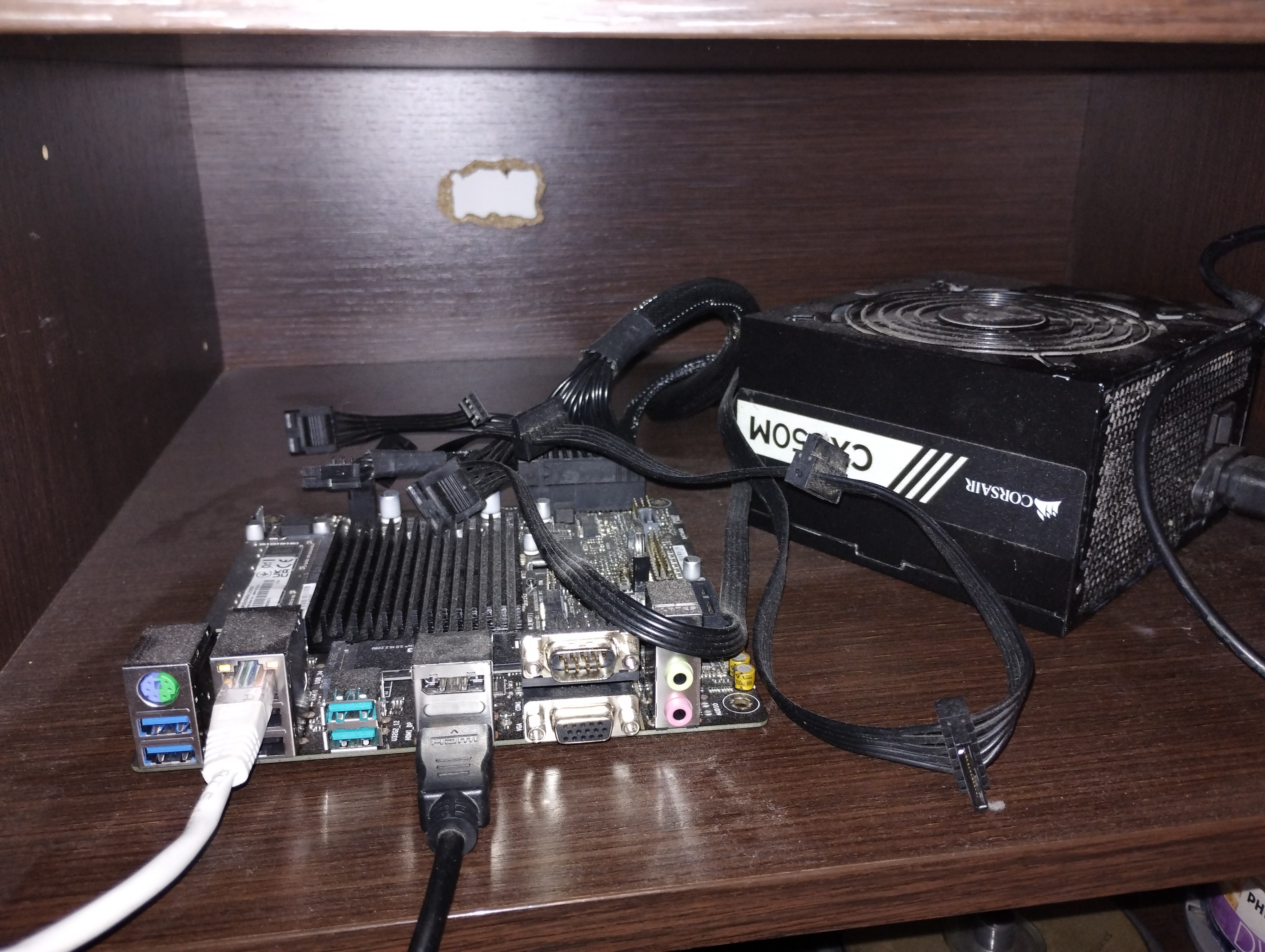
This is a custom built mini PC, with a mini-ITX motherboard and an Intel N100 CPU. It gets powered by a power supply that I got from an old computer. Also, it needs no active cooling, just a heatsink. It almost never gets above 60°C.
(and yes, it has no case).
In it I run:
- Jellyfin
- All of the *arr stack
- Pairdrop
- My website
- My personal Lemmy instance
- Immich
- Pi-Hole
- Home Assistant
- Grafana/Prometheus/Node-Exporter stack for monitoring
I think I have the same motherboard, it’s the ASUS N100I-D D4, right?
Yes, this is it. I bought it because it was cheap (100€) and had a built-in CPU. The only problems are that it hasn’t got many SATA or PCIe ports. This is fine however, because I have no need for them right now.
The only problems are that it hasn’t got many SATA or PCIe ports.
I did need multiple SATA ports and chose to use an m.2 to SATA adapter myself.
I feel like this should be a quarterly post. Really liking all these setups.

Damn that’s alot 😅😂
Fascinating
I need the 2nd cable from to top right to the front bottom left ;)
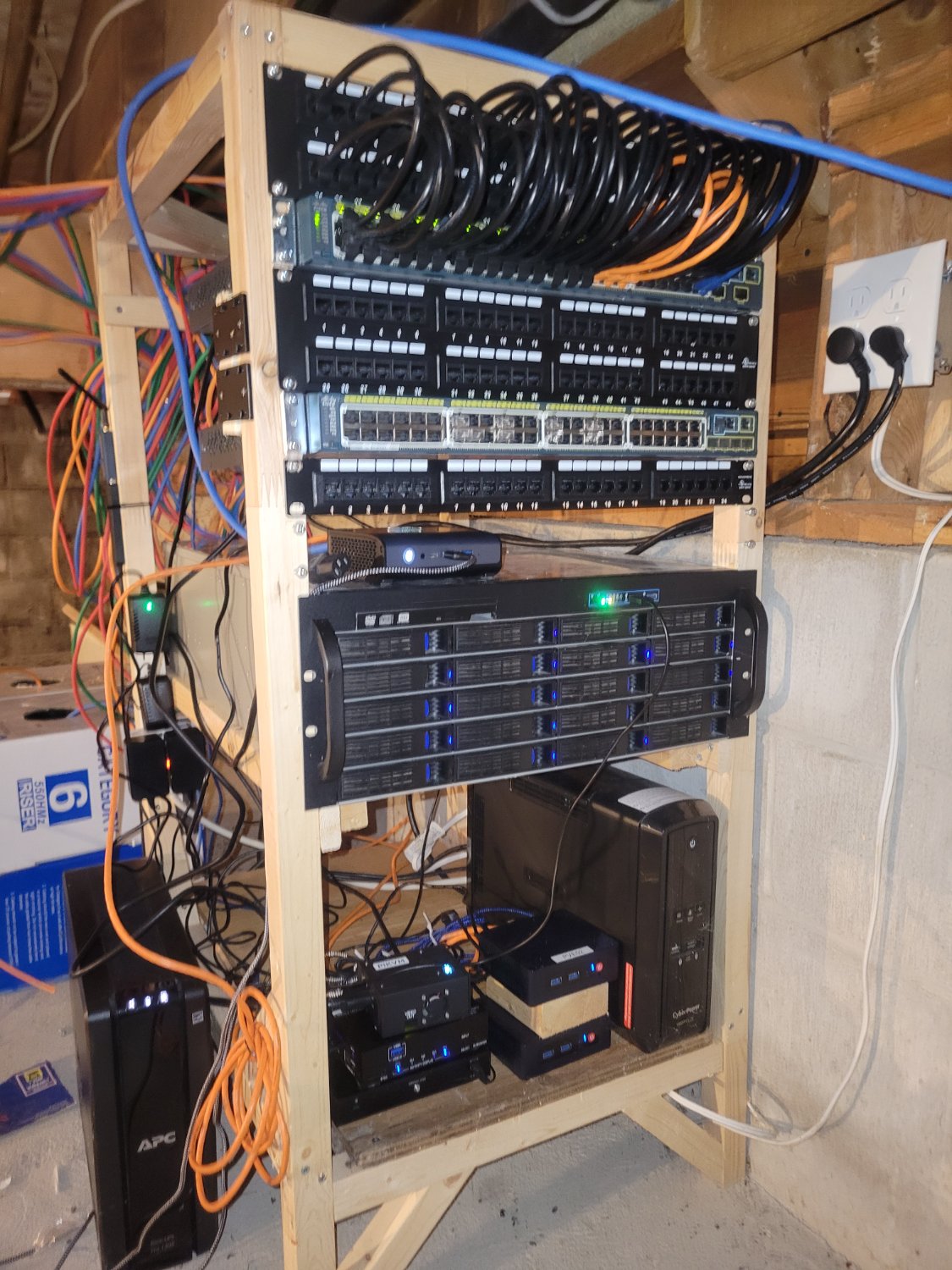
Top to Bottom:
- 48port Patch panel
- Cisco 2990 48 port Poe
- 48port Patch panel (future)
- Cisco 2990 48 port Poe (future)
- 24 port patch panel (spare)
- Pfsense 2.5gb eth minipc
- 4u server 20 bay (proxmox)
Bottom area:
- 2 mini pcs (proxmox)
- PiKVM and ezcoo switch connected to all PCs
- Couple of UPS
The access to the crawlspace isn’t great so the CrapRack tm had to be assembled in the crawlspace.
Hope you grounded your hardware to the wood.
Yo dawg I heard you liked patch panels
Ha indeed, every room in the house is getting 2 faceplates (on roughly opposite sides of the room) with 4 Ethernet that runs each back to the server rack. Is every room having 8 runs right back to the switch excessive, you bet.
In my old place I had one faceplate with 2 ethernet, coax and phone to each room, but phone and coax is useless and I didn’t have enough Ethernet.
The range of sofistication in this thread is actually kind of breathtaking
Comment 1: a small raspberry pi
Comment 2: full rack with tens of thousands worth of hardware
I love it. I’ve seen shit that has literally had my mouth agape to the piles on the floor like little gremlins ater my own heart.
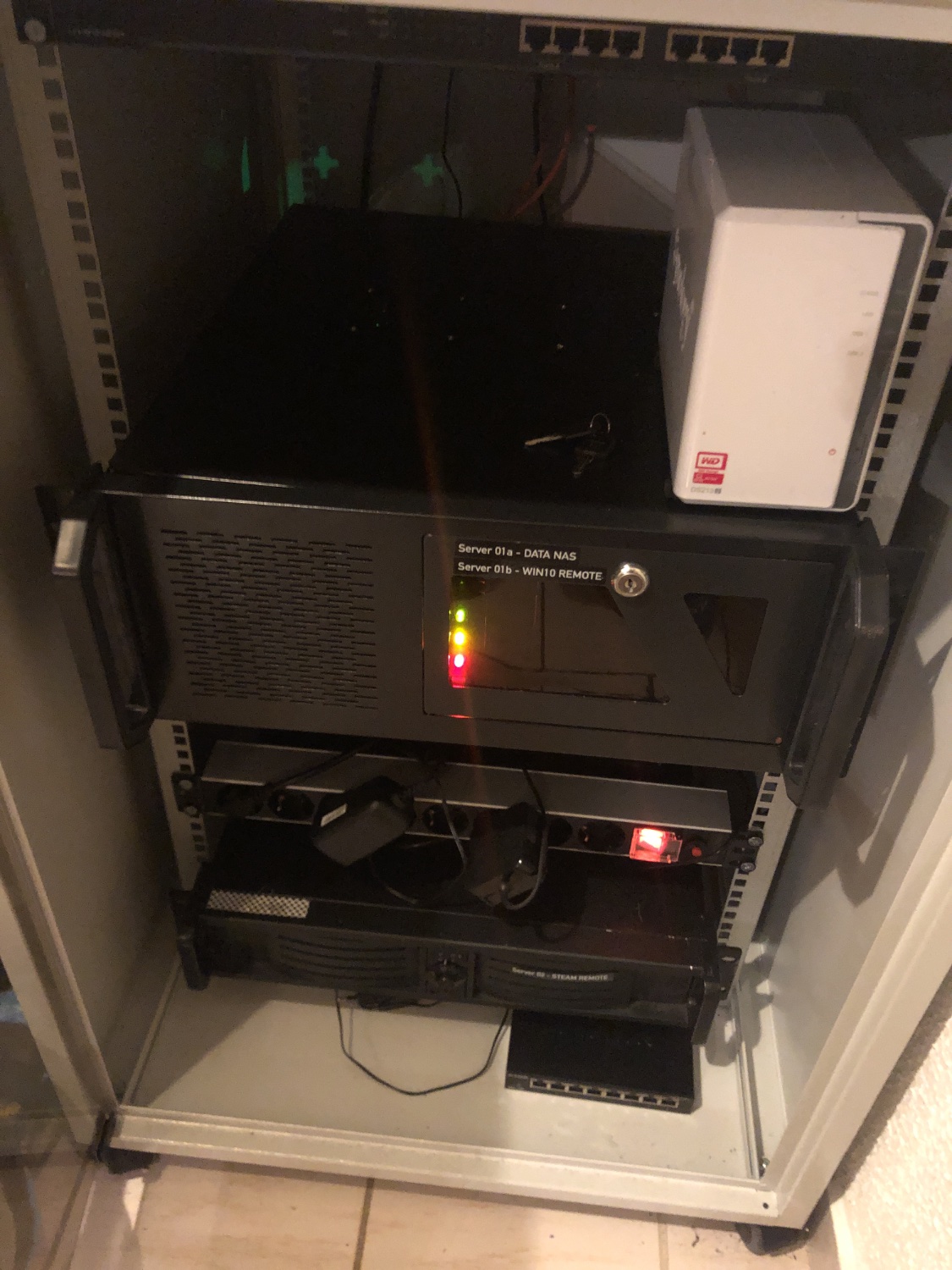
My main server cabinet at my parents house. I have one old Synology for backups, one home built Xpenology for streaming and one small server with old gaming hardware for steam link, but its barely running anymore. Theres one HP server with 2x Xeon E5 and 128GB missing in the photo that I got for 100€ at an auction, which I use for occasional game server hosting.
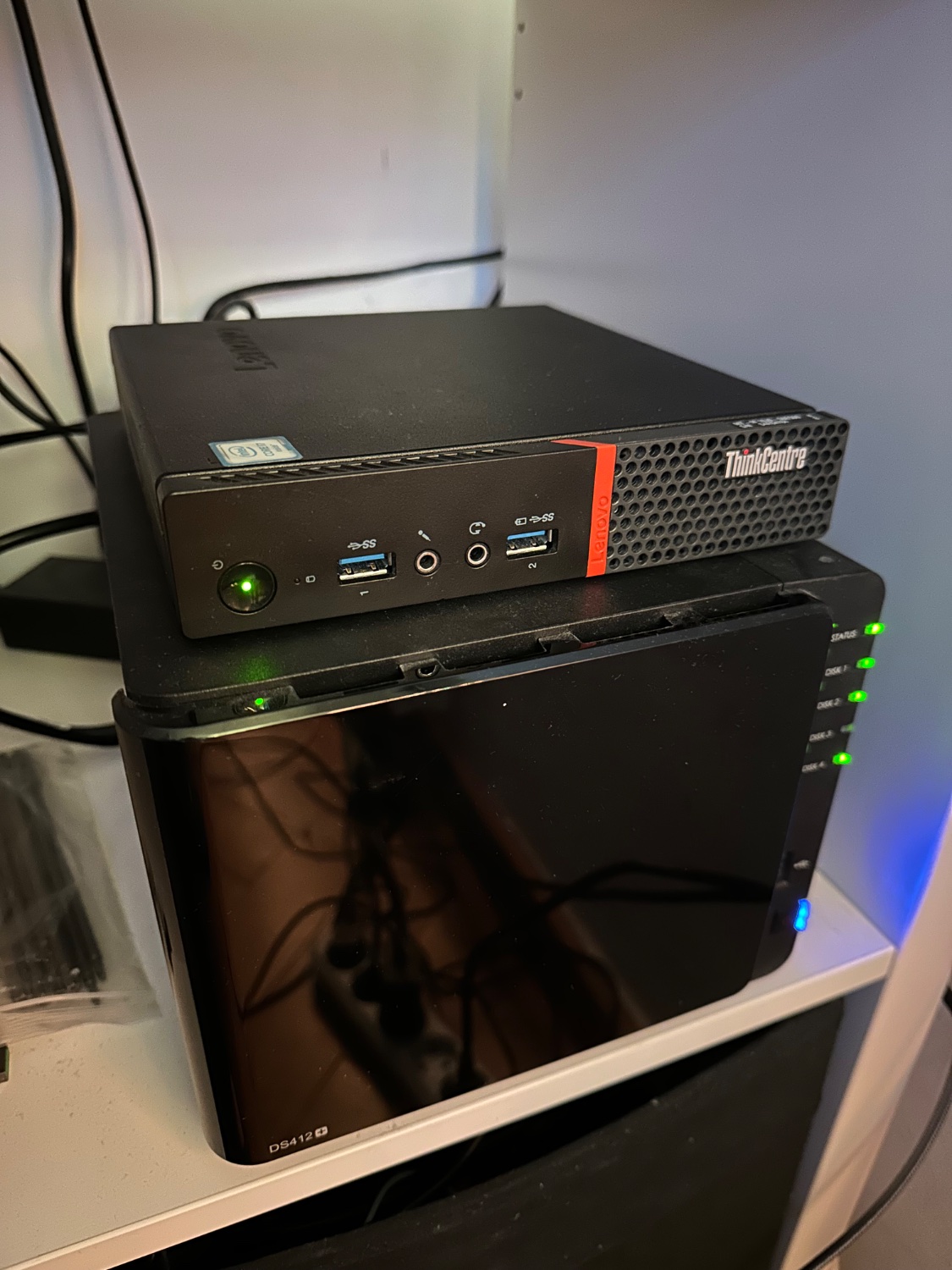
At home I have this setup, my main synology NAS and a thinkcentre with an i7 and 16GB of ram for Minecraft and FiveM.
The small board you can see is a pi hole
I do have more tech elsewhere but this pile is comically ugly
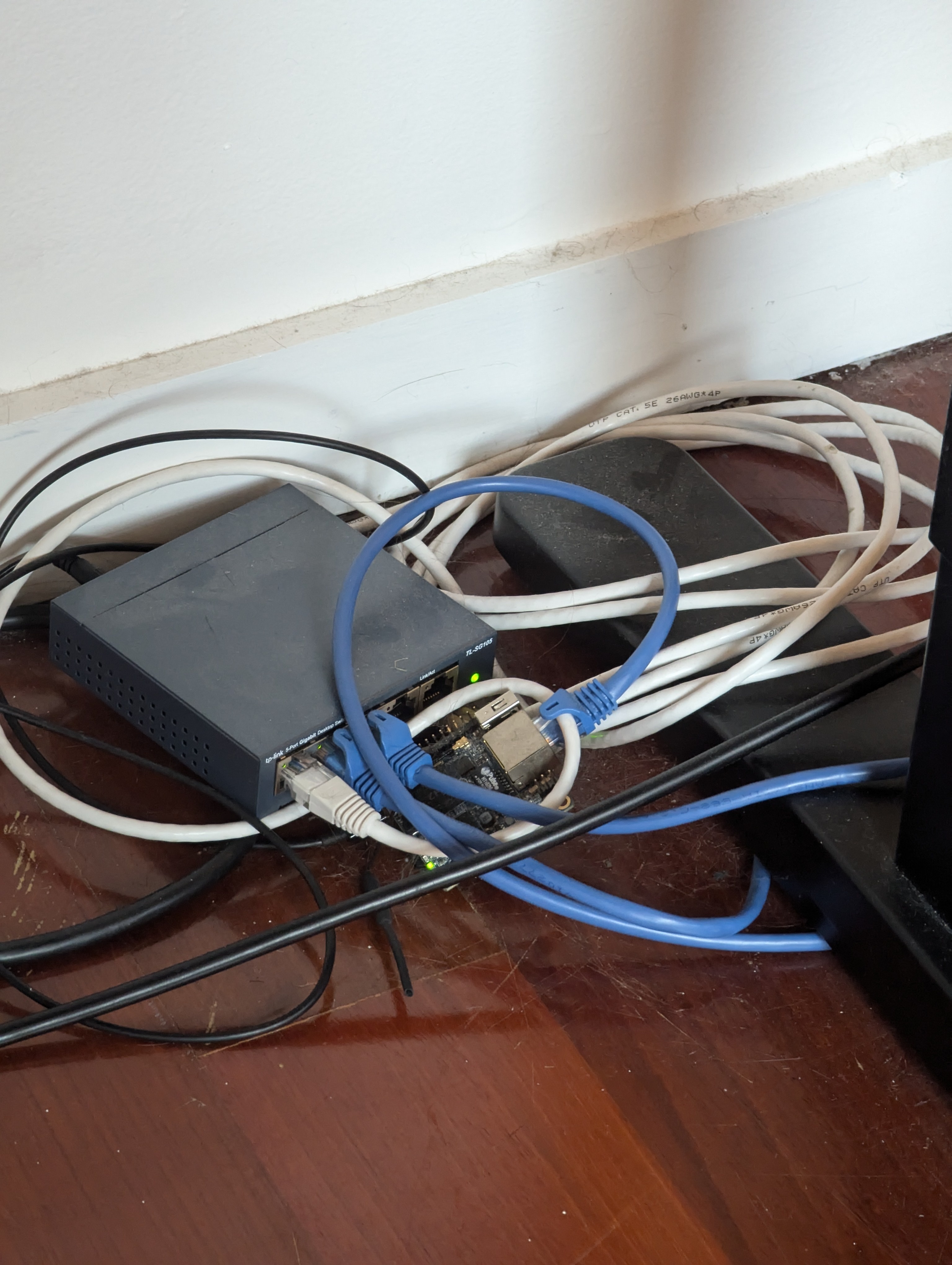
Orange pi zero?
yep! good eye
Extra points for not lifting the spagetti pile when you’re hovering.

So nobody is going to ask about the rotary phone?
It’s a GPO 706, which is a classic British bakelite phone from the '60s. I have it hooked up to a SIP trunk through an OBi 100. Right now it can receive calls but not make them because I haven’t gotten around to sorting out a pulse-to-tone dialing converter yet.
Oh yes the bright red rotary phone…I imagine if it’s ringing, something has gone terribly wrong.
Be the change you wish you see in the world. :)
Can’t but join in the fun. Meet the Egg Mini. Does all sorts of humble servitude, but the coolest thing is a webserver only accessible via Wireguard through HAproxy running on a Digital Ocean droplet.
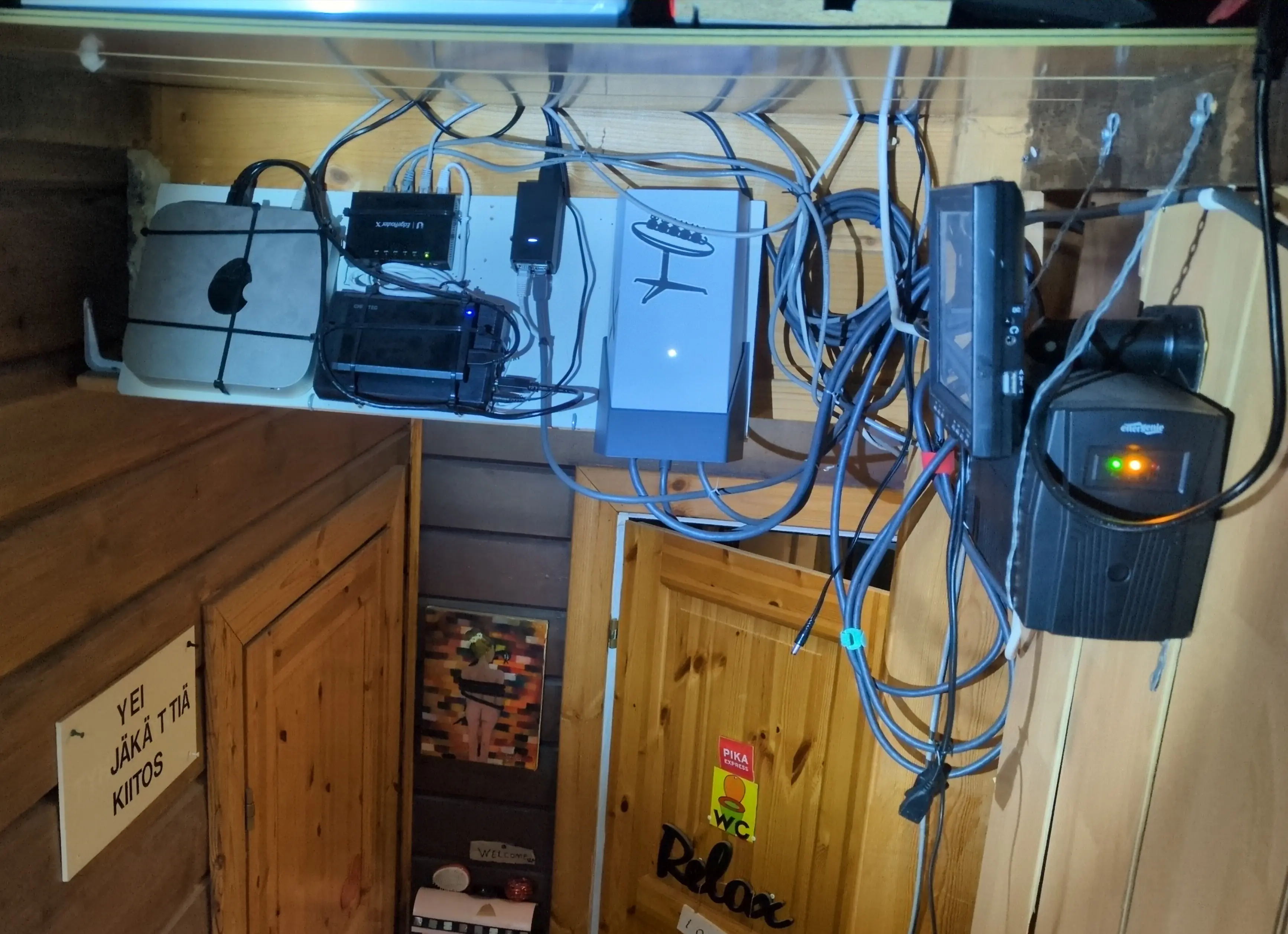
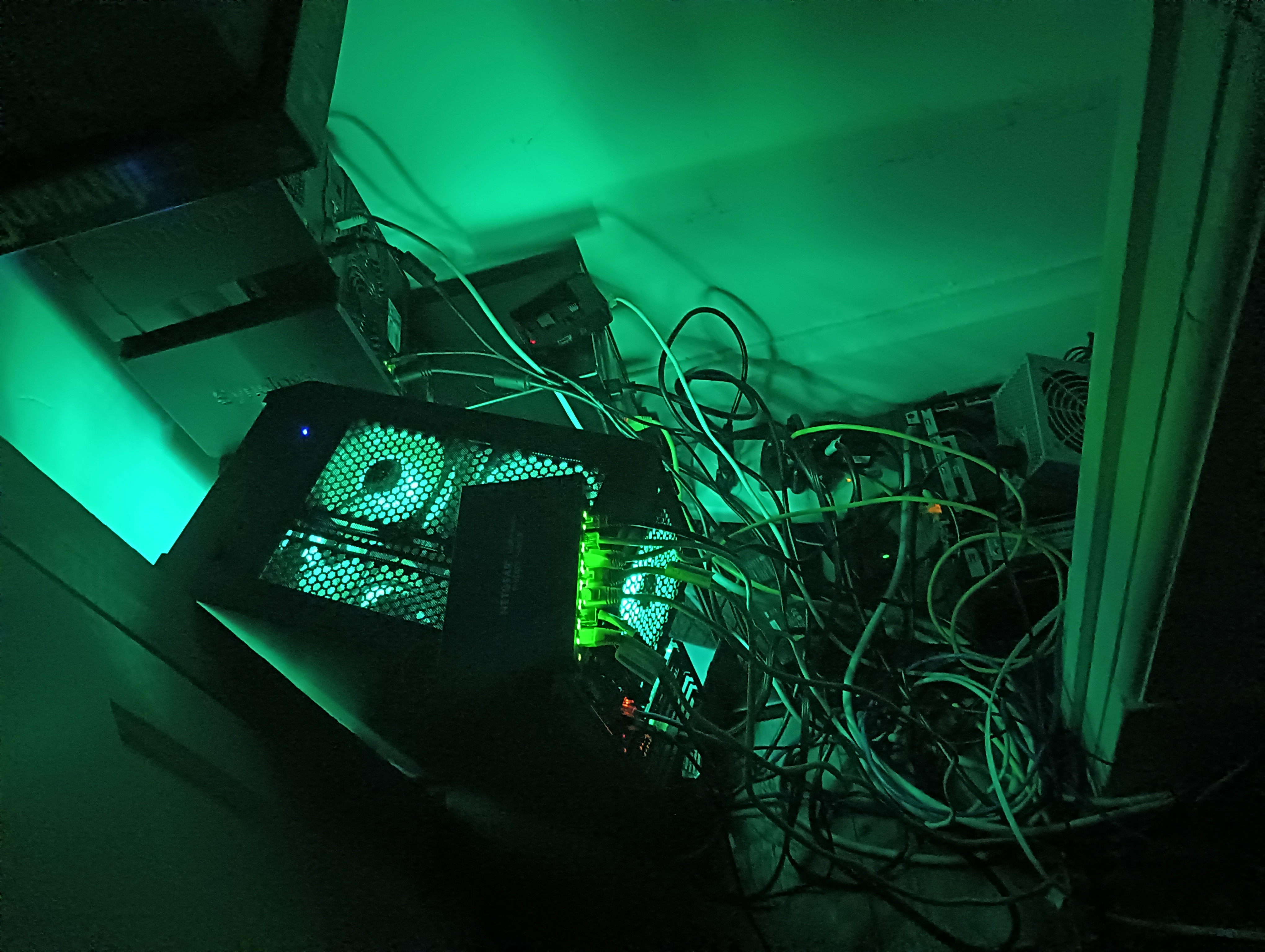
This one gave me the confidence to post my setup, I salute your bravery (°_°)7.
The best of luck with your future insurance claim.
Hey it works!
To be fair I just moved and had to get Plex back up for the wife and audiobookshelf back up for me asap! Should look better soon
messy asf, a proper hobbiest system
Your machine is going to get fried
What do you mean? Because no ups?
No, the case is open and there is stuff everywhere. At some point something will fall in and it will cause chaos
Oh, definitely. Waiting on a power supply for that machine. Using a backup that doesn’t quite fit right now.
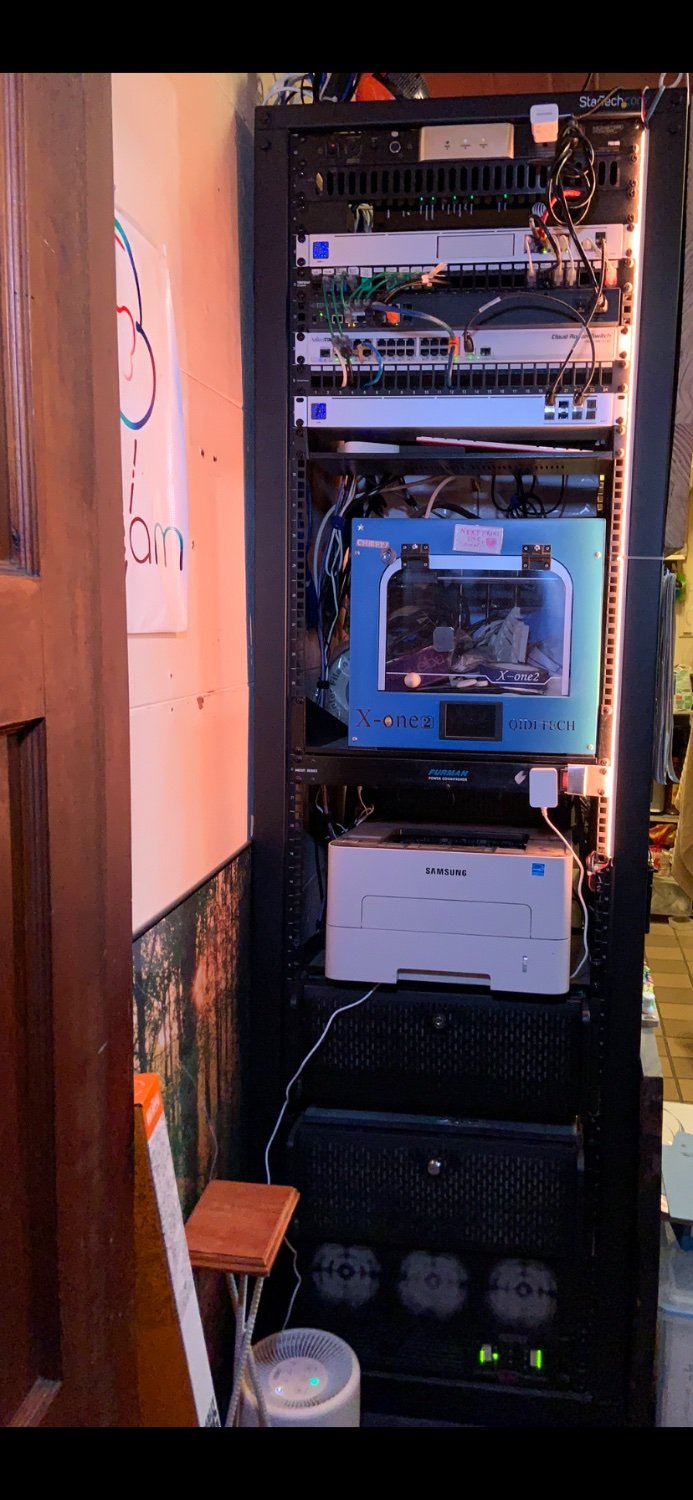
I’m in the middle of moving so everything is packed up. But this was the rack before we moved.
Networking, 3D printer, black and white laser printer and a color laser printer, several servers.
I had home assistant, Plex, Minecraft server, 7 days to die server, and many other services.
Servers are Ryzen 5950x and the other is a threadripper 24 core.
The other side of the rack was HDMI switchers and some game consoles.
Going to miss the 1gbps fiber internet, we now have Starlink.
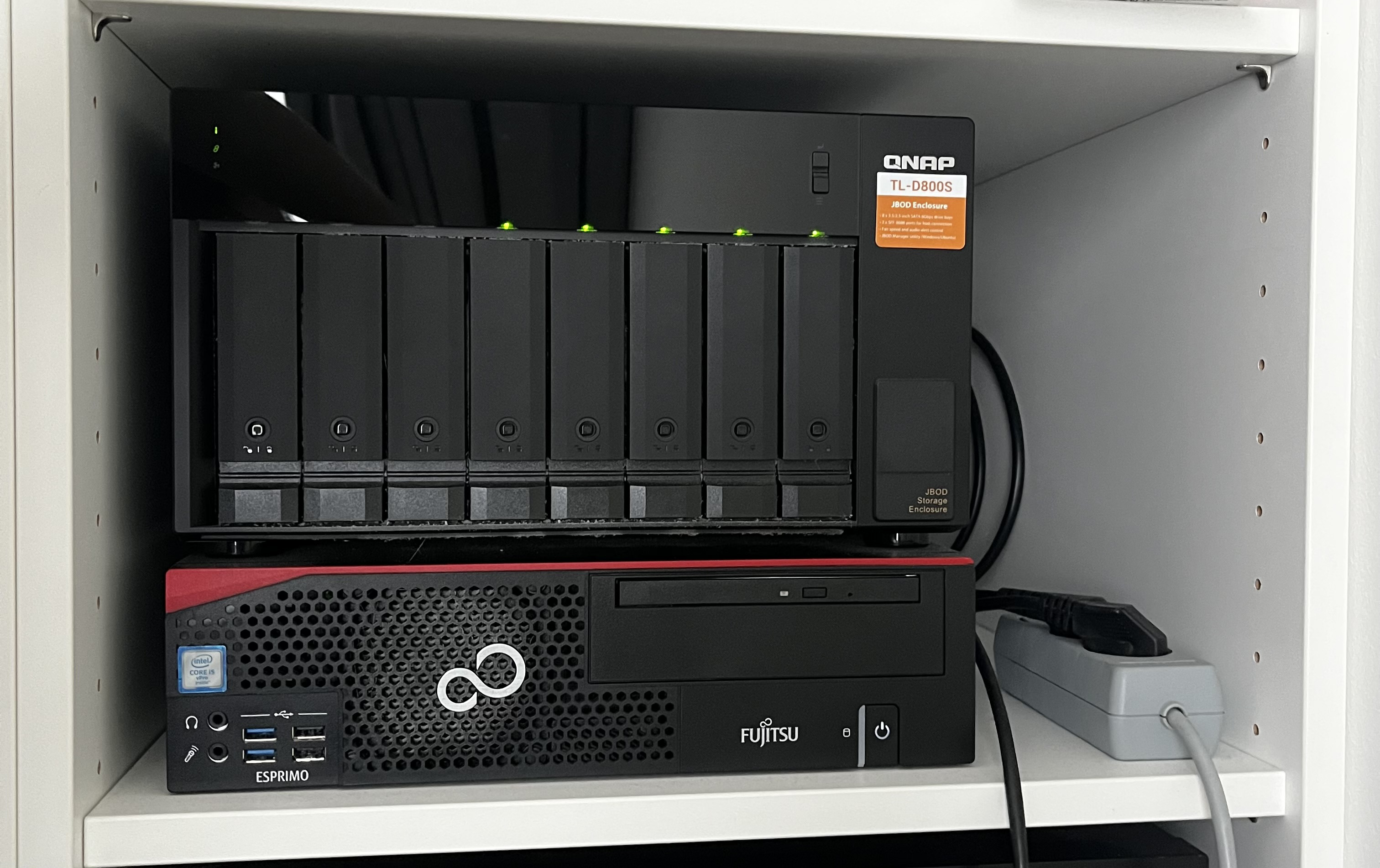
The disks are the most uggo part. They’re a bunch of old disks of varying sizes with a RAID+LVM setup to make the most use of them while still being redundant.
lsblk output of the whole thing
saiko@vineta ~ % lsblk NAME MAJ:MIN RM SIZE RO TYPE MOUNTPOINTS sda 8:0 0 111.8G 0 disk ├─sda1 8:1 0 512M 0 part /Volumes/Boot └─sda2 8:2 0 111.3G 0 part /nix/store / sdb 8:16 1 372.6G 0 disk └─sdb1 8:17 1 372.6G 0 part └─md1 9:1 0 1.5T 0 raid5 └─storagevg-storage 254:0 0 6.3T 0 lvm /Volumes/storage sdc 8:32 1 465.8G 0 disk ├─sdc1 8:33 1 372.6G 0 part │ └─md1 9:1 0 1.5T 0 raid5 │ └─storagevg-storage 254:0 0 6.3T 0 lvm /Volumes/storage └─sdc2 8:34 1 93.1G 0 part └─md2 9:2 0 279.3G 0 raid5 └─storagevg-storage 254:0 0 6.3T 0 lvm /Volumes/storage sdd 8:48 1 4.5T 0 disk ├─sdd1 8:49 1 372.6G 0 part │ └─md1 9:1 0 1.5T 0 raid5 │ └─storagevg-storage 254:0 0 6.3T 0 lvm /Volumes/storage ├─sdd2 8:50 1 93.1G 0 part │ └─md2 9:2 0 279.3G 0 raid5 │ └─storagevg-storage 254:0 0 6.3T 0 lvm /Volumes/storage ├─sdd3 8:51 1 465.8G 0 part │ └─md3 9:3 0 931.3G 0 raid5 │ └─storagevg-storage 254:0 0 6.3T 0 lvm /Volumes/storage └─sdd4 8:52 1 3.6T 0 part └─md4 9:4 0 3.6T 0 raid1 └─storagevg-storage 254:0 0 6.3T 0 lvm /Volumes/storage sde 8:64 1 7.3T 0 disk ├─sde1 8:65 1 372.6G 0 part │ └─md1 9:1 0 1.5T 0 raid5 │ └─storagevg-storage 254:0 0 6.3T 0 lvm /Volumes/storage ├─sde2 8:66 1 93.1G 0 part │ └─md2 9:2 0 279.3G 0 raid5 │ └─storagevg-storage 254:0 0 6.3T 0 lvm /Volumes/storage ├─sde3 8:67 1 465.8G 0 part │ └─md3 9:3 0 931.3G 0 raid5 │ └─storagevg-storage 254:0 0 6.3T 0 lvm /Volumes/storage └─sde4 8:68 1 3.6T 0 part └─md4 9:4 0 3.6T 0 raid1 └─storagevg-storage 254:0 0 6.3T 0 lvm /Volumes/storage sdf 8:80 1 931.5G 0 disk ├─sdf1 8:81 1 372.6G 0 part │ └─md1 9:1 0 1.5T 0 raid5 │ └─storagevg-storage 254:0 0 6.3T 0 lvm /Volumes/storage ├─sdf2 8:82 1 93.1G 0 part │ └─md2 9:2 0 279.3G 0 raid5 │ └─storagevg-storage 254:0 0 6.3T 0 lvm /Volumes/storage └─sdf3 8:83 1 465.8G 0 part └─md3 9:3 0 931.3G 0 raid5 └─storagevg-storage 254:0 0 6.3T 0 lvm /Volumes/storage sr0 11:0 1 1024M 0 romPretty clean
lmao mine looks simple af compared with most people here.
Behold my server :

Hardware:
-
Rasberry pi 5 8GB
-
1TB raid between old drives ( one from PC the other a just a regular external WD hard drive ).
Services
- Wireguard VPN/wg-easy
- AudioBookShelf
- Freshrss
- Vaultwarden
- Navidrome
- Calibre Web
- Actual Budget
- Trilium notes
Everything in containers, if you want to know more check this blogpost.
mine is a pi 4 but basically the same, just shoved inside a box for protection
Nothing wrong with simple! If it works for you that’s all that matters!
What made you go with a RPI 5?
Right now I don’t have much to tinker with, so I got something that down the line would serve that role.
Why the 5 specifically, instead of the 4 or other SBC came down to pricing in my region, raw power, and the PCIE slot in which I intend to put a nvme when upgrading my laptop.
Oooo I should do something like this! Right now I have a Pi 4 with OMV and just OMV on it. It’s even running on a SSD. It could do so much more!
OMV has such a nice Docker management interface too. I really feel spoiled with it.
I was planning on all my services running in ProxMox or something, but my OMV VM handles all of them except PiHole basically lol. OMV is snazzy. :D
I have a second pi for Pi-Hole! I’ve tried using OMV’s Docker, but I am too dumb to get it configured D: Would you happen to have any resources for getting it up and running?
-




